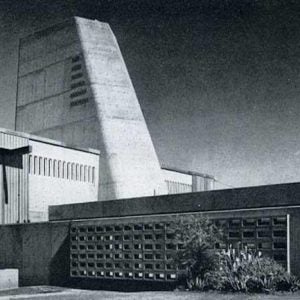Anthropogenic carbon emissions – chiefly coming from fossil fuels – are to blame for global warming, concludes the Fourth Assessment Report of the Intergovernmental Panel on Climate Change (IPCC).
The document states: “Warming of the climate system is unequivocal, as is now evident from observations of increases in global average air and ocean temperatures, widespread melting of snow and ice, and rising global mean sea level.” The IPCC adds: “Most of the observed increase in globally averaged temperatures since the mid-20th century is very likely due to the observed increase in anthropogenic greenhouse gas concentrations.”
This is a significant advance since the Third Assessment Report (TAR) in 2001, which concluded: “most of the observed warming over the last 50 years is likely to have been due to the increase in greenhouse gas concentrations.”
Improved observations and climate modelling since the TAR make it extremely unlikely that global climate change of the past fifty years can be explained without human intervention, specifically the combined influences of greenhouse gas increases and stratospheric ozone depletion.
Global atmospheric concentrations of carbon dioxide, methane and nitrous oxide have increased markedly as a result of human activities since 1750 and now far exceed pre-industrial values. These are due “primarily to fossil fuel use” and land-use change.
Carbon dioxide, the most important anthropogenic greenhouse gas, has seen global atmospheric concentration increase from a pre-industrial value of about 280 ppm to 379 ppm in 2005, far exceeding the natural range over the last 650,000 years. Furthermore, the annual carbon dioxide concentration growth-rate was larger during the 10 years to 2005 than it has been since 1960.
In assessing the impact of anthropogenic carbon emissions, the IPCC says that global average surface warming following a doubling of carbon dioxide concentrations is likely to be about 3°C, and is very unlikely to be less than 1.5°C. For the next two decades a warming of about 0.2°C per decade is projected for a range of emission scenarios and even if the concentrations of all greenhouse gases and aerosols had been kept constant at year 2000 levels, a further warming of about 0.1°C per decade would be expected.
The best estimates for projected globally averaged surface warming for the end of the 21st century (2090–2099) relative to 1980–1999 for the low emissions scenario is 1.8°C while the high emissions scenario is 4.0°C. Furthermore, the document concludes, even if greenhouse gas concentrations were to be stabilised, anthropogenic warming and sea level rise would continue for centuries due to the timescales associated with climate processes and feedbacks.
The last time the polar regions were significantly warmer than present for an extended period (about 125,000 years ago), reductions in polar ice volume led to 4m – 6m of sea level rise. Global average sea level rose at an average rate of 1.8 mm per year 1961 – 2003, but increased to about 3.1 mm per year over 1993 – 2003.
Related ArticlesDoE grant for next gen nuclear DoE releases GNEP plan Mixed reactions to the DOE FY-2011 budget request






